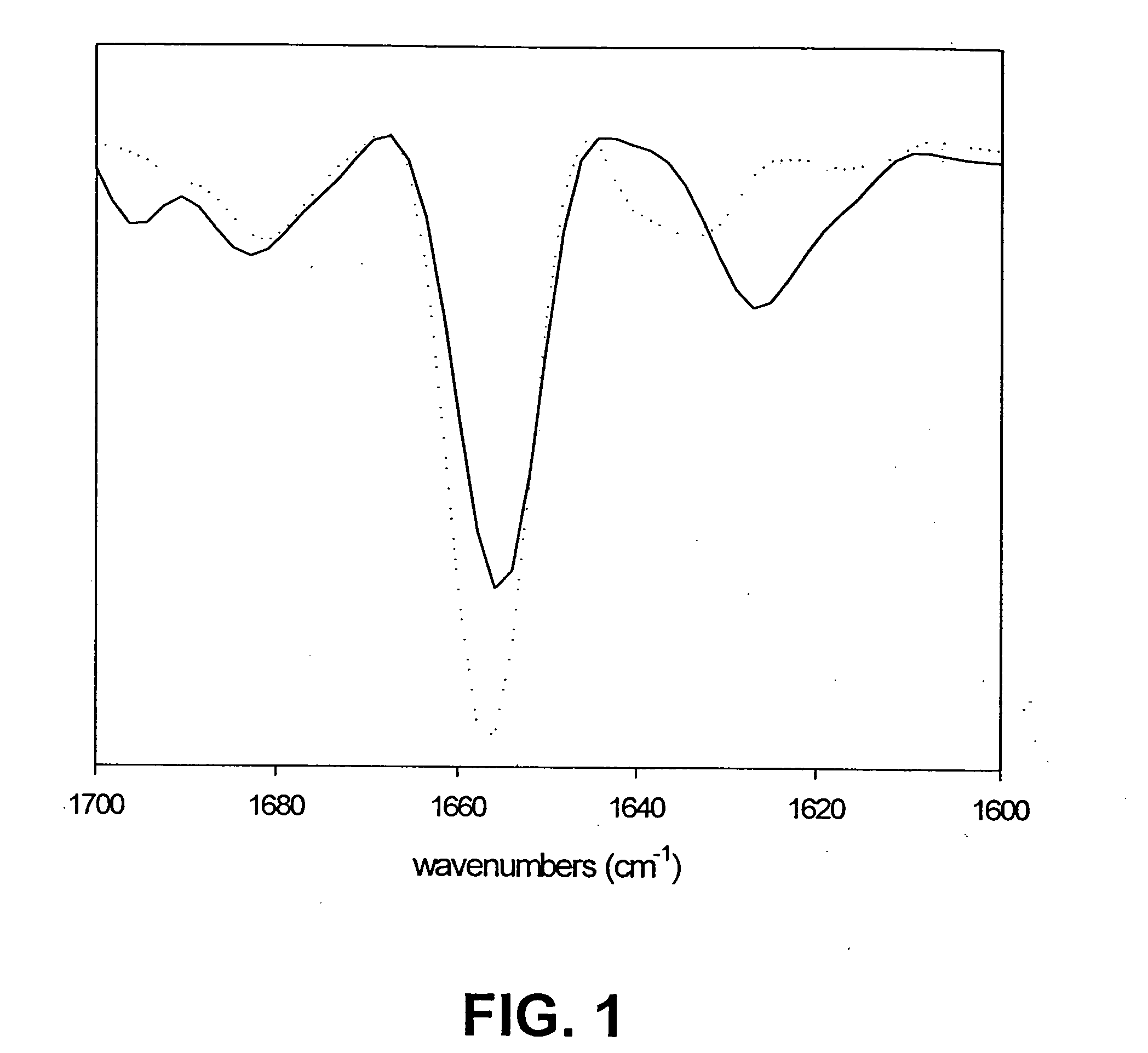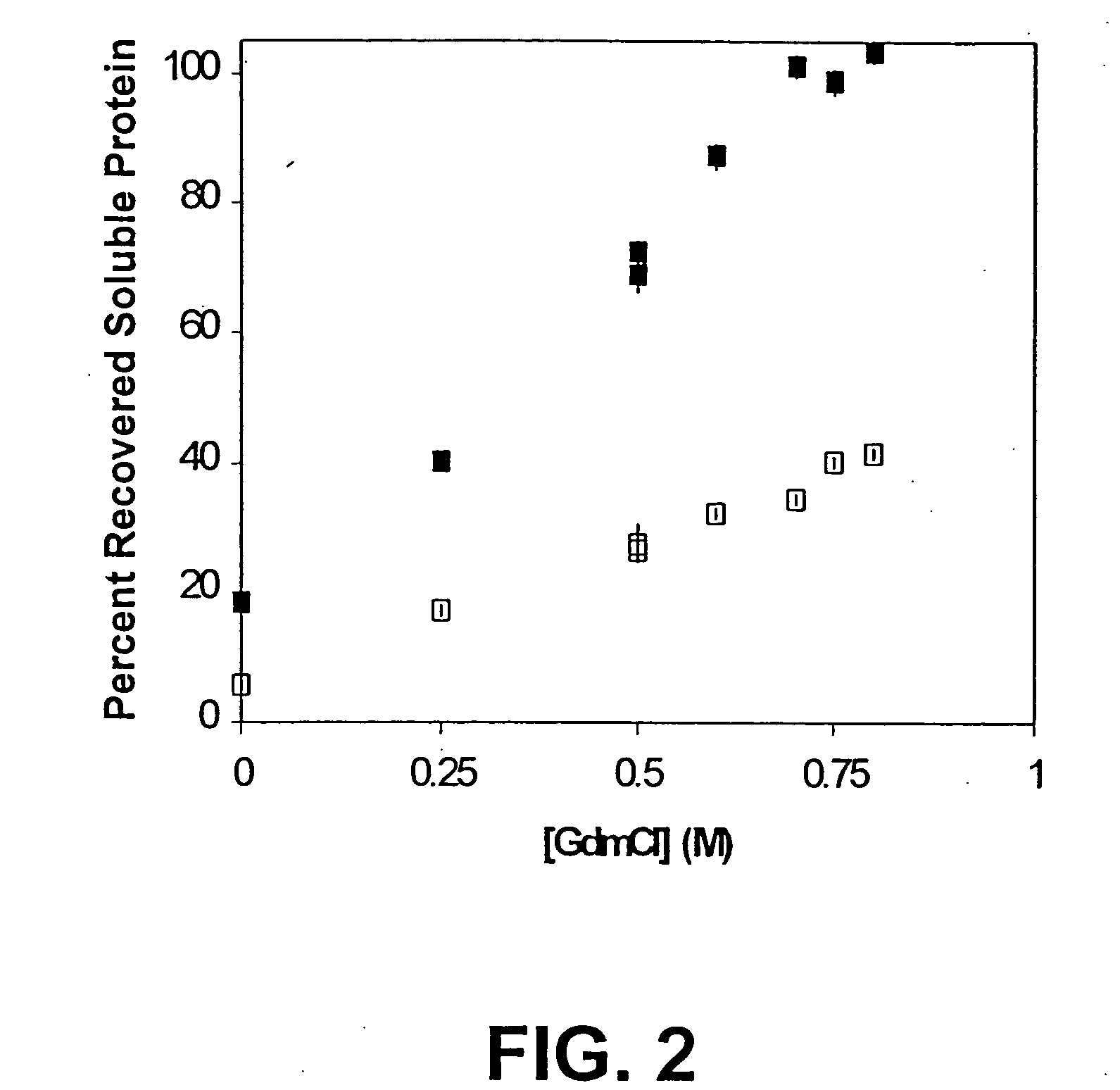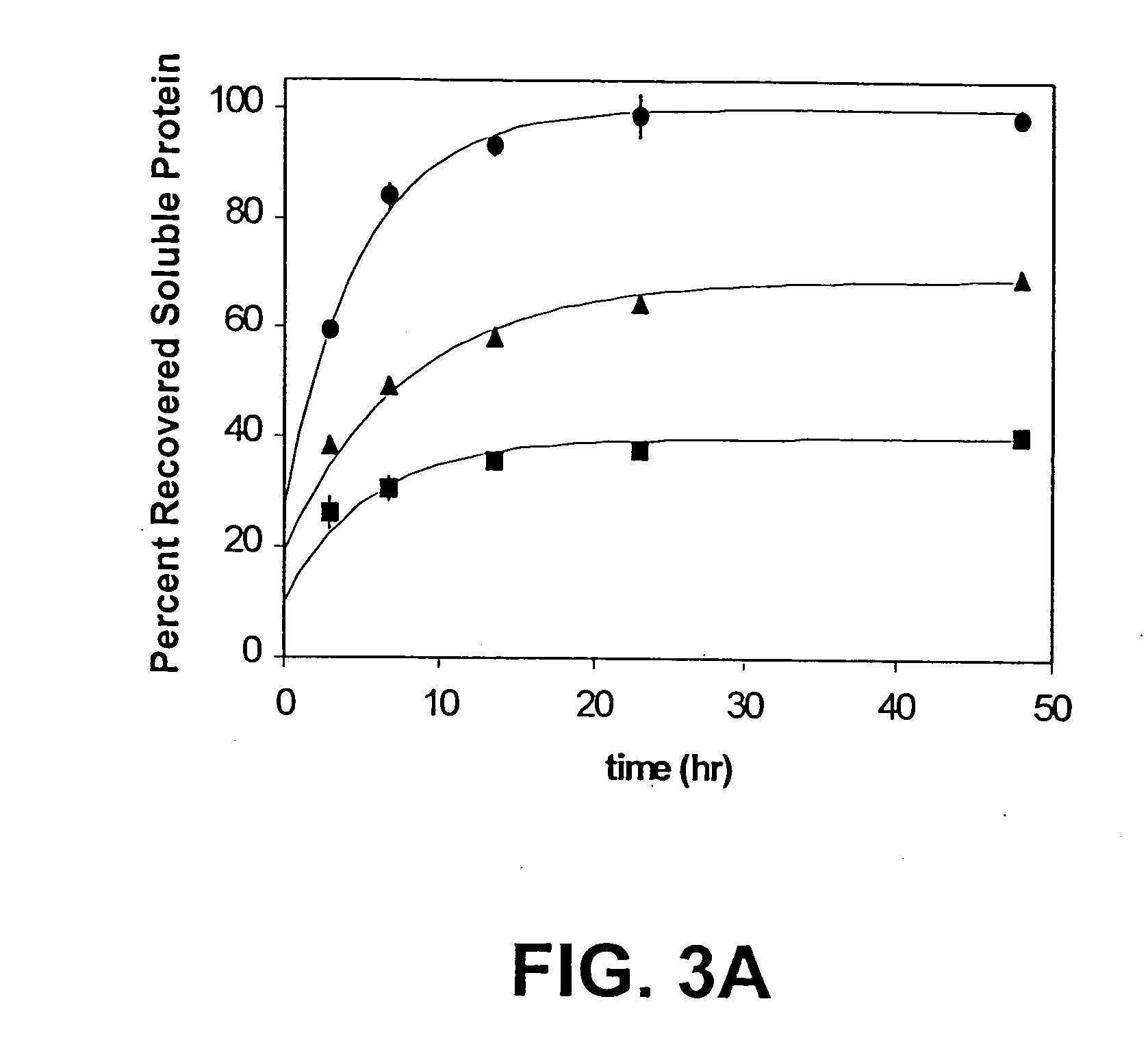High pressure refolding of protein aggregates and inclusion bodies
a protein aggregate and protein technology, applied in the field of protein biochemistry, can solve the problems of loss of biological activity, limited concentration of chaotropic agents, harmful in therapeutic use, etc., and achieve the effect of reducing and preparing
- Summary
- Abstract
- Description
- Claims
- Application Information
AI Technical Summary
Benefits of technology
Problems solved by technology
Method used
Image
Examples
example 1
[0071] Materials.
[0072] Recombinant human growth hormone lyophilized in ammonium bicarbonate was obtained from Genentech Inc., South San Francisco, Calif. Hen egg white lysozyme, three times crystallized, dialyzed and lyophilized (Cat. #L-6876, lot #65H7025), EDTA (Cat. #E-5134), sodium azide (Cat. #S-8032), and guanidine chloride (Cat. #G-4505), were obtained from Sigma Chemicals (St. Louis, Mo.). Dithiothreitol (DTT) (Cat. #D-5545), and Micrococcus lysodeiklicus cells (Cat. #M-3770), were also obtained from Sigma. Tris base was purchased from Fisher Scientific (Pittsburgh, Pa.) (Cat. #BP152-500). Sodium citrate was purchased from J.T. Baker Chemical Co. (Phillipsburg, N.J.) (Cat. #3643-1).
example 2
[0073] Analytical Techniques.
[0074] Fourier Transform Infrared Spectroscopy (FTIR) was used to determine the secondary structure of growth hormone aggregates in solution. All spectra were collected on a Nicolet Magna model 550 spectrometer equipped with a dTGS detector (Nicolet Instrument Corp., Madison, Wis.). A 256-scan interferogram was acquired in single-beam mode with a 4 cm−1 resolution. Aggregate slurries were placed in an adjustable path-length IR cell set at 8 microns. The same cell was used to collect a buffer blank (the buffer used for the blank was identical to the buffer in the aggregate slurry). Buffer and water vapor contributions were subtracted from the spectrum using the Nicolet software. Second derivative analysis was used for peak narrowing and resolution. Contributions from the second derivative of the water vapor spectrum were also subtracted from the spectrum. A seven-point smoothing was used to remove white noise, and baseline correction was performed over t...
example 3
[0083] High Pressure Treatment.
[0084] Pressure was generated using high-pressure nitrogen (400 bar) connected to 10-fold hydraulic intensifier equipment (High Pressure Equipment Company, Erie, Pa.). Time to reach the desired pressure was typically 10 min. The nitrogen input is connected to a 10-fold hydraulic intensifier, which is connected to a 2-liter cloverleaf reactor rated to 30,000 psi (2 kbar). For higher pressures, equipment is modified for higher ratings. Samples were prepared in heat-sealed bulbs of SAMCO® plastic transfer pipets (Fisher Scientific, Pittsburgh, Pa.) and placed in a to a 2 liter clover leaf reactor rated to 2,000 bar and filled with water. Samples were slowly pressurized (over 10 minutes) to the final desired pressure. Pressurization-induced heating was minimized. The depressurization rate was approximately 10 bar per minute.
PUM
| Property | Measurement | Unit |
|---|---|---|
| concentration | aaaaa | aaaaa |
| concentration | aaaaa | aaaaa |
| concentration | aaaaa | aaaaa |
Abstract
Description
Claims
Application Information
 Login to View More
Login to View More - R&D
- Intellectual Property
- Life Sciences
- Materials
- Tech Scout
- Unparalleled Data Quality
- Higher Quality Content
- 60% Fewer Hallucinations
Browse by: Latest US Patents, China's latest patents, Technical Efficacy Thesaurus, Application Domain, Technology Topic, Popular Technical Reports.
© 2025 PatSnap. All rights reserved.Legal|Privacy policy|Modern Slavery Act Transparency Statement|Sitemap|About US| Contact US: help@patsnap.com



